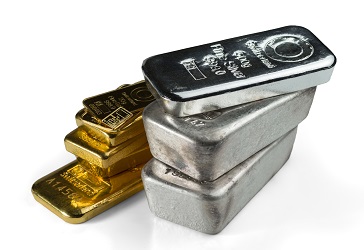Gold and silver have been revered throughout history not just as forms of currency but as symbols of wealth, power, and stability. Their value extends far beyond mere monetary terms, reflecting deep cultural, historical, and intrinsic significance.
Historical Significance
Gold and silver have been integral to human civilization for thousands of years. Ancient cultures used these metals in rituals, jewelry, and trade, leading to their enduring presence in society. For example, gold was often associated with deities and royalty, symbolizing power and divinity. This historical reverence continues today, with gold and silver often viewed as a safe haven in times of uncertainty.
Cultural Symbolism
In many cultures, gold and silver carry rich symbolic meanings. Gold represents purity, achievement, and immortality. In contrast, silver is often associated with intuition, clarity, and emotional balance. This symbolism influences the way these metals are perceived and valued, making them cherished possessions across generations. For instance, gold jewelry is often given as a symbol of love and commitment in marriages, transcending its economic value.
Intrinsic Properties
Both gold and silver possess unique physical properties that contribute to their value. Gold is non-reactive, resistant to tarnishing, and has excellent conductivity, making it useful in various industrial applications, including electronics and aerospace. Silver, known for its antimicrobial properties, is used in medicine and technology. These intrinsic qualities enhance their desirability beyond investment purposes at https://westminstermint.com/.

Investment Stability
Investors often turn to gold and silver during economic downturns or periods of inflation. Unlike fiat currencies, which can lose value due to inflation or geopolitical instability, precious metals tend to retain their worth over time. This quality makes them a reliable store of value and a hedge against economic uncertainty. Many view these metals as a form of financial insurance, adding another layer of value beyond mere currency.
Collectible Value
Coins and bullion can also hold significant collectible value. Rare coins, especially those with historical significance or unique features, can fetch prices far beyond their metal content. Collectors often seek out these items, driven by passion and the thrill of ownership. The numismatic value can significantly enhance the worth of these assets, making them appealing to both investors and hobbyists alike.
Global Appeal
Gold and silver are universally recognized and accepted, transcending national borders and cultural differences. This global appeal ensures that they hold value across various markets, providing liquidity that other investments might lack. As a result, owning these metals can offer a sense of security, knowing that they can be exchanged or sold worldwide.
Philosophical and Emotional Connection
For many, gold and silver evoke a philosophical connection tied to wealth and legacy. People often associate these metals with their aspirations, family heritage, and even personal identity. The act of owning these precious metals can provide a sense of accomplishment and emotional fulfillment that transcends financial gain.
Gold, silver bullion, and coins embody a wealth of value that goes far beyond their monetary worth. Their historical significance, cultural symbolism, intrinsic properties, investment stability, collectible allure, global appeal, and emotional connections create a multifaceted tapestry that makes these metals timeless treasures. Whether as a financial safeguard or a cherished heirloom, gold and silver continue to hold a special place in the hearts and minds of people around the world.